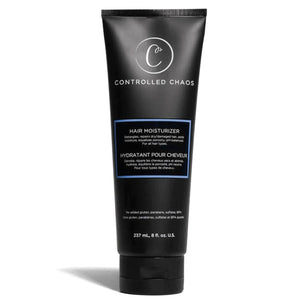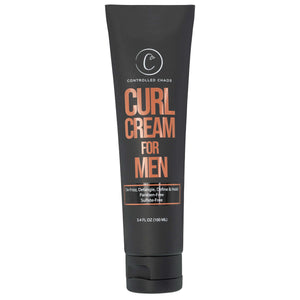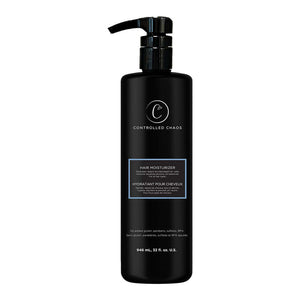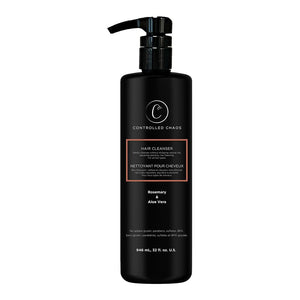

Curly hair is a unique and beautiful hair type that requires special care. Regular trimming is an essential aspect of curly hair care that often gets overlooked. This guide will explore the importance of regular trimming for maintaining healthy curly hair. We will also explain how often should curly hair be trimmed. Here is a step-by-step guide on how often curly hair should be cut to achieve the best results.
Curly hair should generally be trimmed every 6 to 8 weeks. Regular trims are essential for maintaining the shape and health of curly locks. They help prevent split ends and breakage, common issues in curly hair due to its natural texture and tendency to be more prone to damage. However, individual factors like hair growth rate and overall hair health may also influence the frequency of trims.
Those with faster hair growth or hair more susceptible to damage may benefit from more frequent trims, while others with slower hair growth or robust hair may be able to extend the time between trims. Consistent trimming is key to keeping curly hair looking its best and ensuring that curls remain bouncy, defined, and vibrant.

Impact of Trimming on Hair Health
Trimming has a profound impact on the health of your curly hair. When left unaddressed, split ends can lead to breakage, resulting in shorter, weaker strands. Regular trimming helps maintain the integrity of the hair. Doing so promotes healthier hair growth. Moreover, this also improves hair health overall, giving your curls a stronger foundation for further development.
Trimming is Good for Length Retention
Contrary to the misconception that trimming hinders hair growth, regular trims are essential for length retention in curly hair. When split ends are allowed to persist, they continue to split higher up the hair shaft. It will lead to more significant hair breakage. By scheduling regular trims, you remove the damaged ends promptly. This allows your curls to retain their length and promotes steady growth.
Does Trimming Help With the Frizz Control?
Frizz is a common concern for curly hair, and split ends exacerbate the problem. Damaged ends can cause the hair to appear frizzy, as they disrupt the natural curl pattern. Regular trimming helps control frizz by eliminating these damaged ends. As a result, your curly hair will appear more defined, sleek, and manageable. Therefore, it is essential to trim curly hair split ends.
Understanding Curly Hair Trimming
Curly hair has distinct characteristics that set it apart from other hair types. Unlike straight hair, curls have a natural texture and shape that require careful handling. In this section, we will delve into the unique characteristics of curly hair.
Unique Characteristics of Curly Hair that Require Specific Trimming Considerations
Curl Pattern Variation: Curly hair often exhibits different curl patterns throughout the head, ranging from loose waves to tight coils. This variation makes it crucial for the stylist to understand the different curl types. Careful consideration of the curl pattern ensures that the hair's natural shape is preserved. So, the best way to trim curly hair is to do it at home or salon.
Shrinkage Effect: Curly hair has a significant shrinkage effect, meaning it appears shorter when dry. This can make it challenging to accurately determine the hair's actual length and lead to unintentional over-trimming. A skilled stylist should account for this shrinkage effect during trimming to avoid cutting off more length.
Challenges of Maintaining Curly Hair Length While Ensuring Optimal Health
Once you have got to know how often should curly hair be trimmed, here are the challenges you can face.
Length Retention: Maintaining length can be challenging for many curly-haired individuals due to the propensity for breakage and split ends. Curly hair's unique structure makes it more susceptible to damage, especially at the ends. Regular trims are necessary to remove split ends and prevent them from traveling up the hair shaft.
Over-trimming Concerns: While trimming is essential for maintaining hair health, over-trimming can lead to frustration for individuals seeking longer curls. Cutting too much length during trims can hinder progress in growing longer hair. Striking a balance between regular maintenance and preserving length is a delicate challenge that skilled stylists must address.
Determining the Ideal Trimming Frequency for Curly Hair
Finding the ideal trimming frequency is crucial for maintaining healthy, well-defined curls while preserving length. This section will discuss the factors to consider when determining how often curly hair should be trimmed.
Factors to Consider When Determining Trimming Frequency
Hair Growth Rate: The rate of hair growth varies from person to person. Some individuals may experience faster hair growth, while others may have a slower growth rate. It's essential to consider your hair's growth rate when deciding on trim curly hair split ends.
Hair Type and Texture: Different hair types and textures have varying trim needs. Consider the density, porosity, and overall health of your hair to determine the appropriate trimming frequency.
Impact of Hair Growth Rate, Hair Type, and Personal Preferences on Trimming Frequency
Hair Growth Rate: Individuals with faster hair growth may find it beneficial to schedule trims every 6 to 8 weeks to maintain healthy ends. Those with slower hair growth may opt for trims every 10 to 12 weeks.
Hair Type and Texture: To prevent split ends, trim curly hair wet or dry hair types may require more frequent trims, typically every 6 to 8 weeks. On the other hand, coarser and more resilient hair may extend trimming intervals to every 10 to 12 weeks.
Benefits of Regular Trimming for Curly Hair
Consistent trimming is a vital practice for curly hair care. Curly hair tends to be more prone to dryness, breakage, and damage. Regular trims are crucial in addressing these concerns and ensuring curly hair remains healthy and beautiful. Let's explore the benefits of regular trimming for curly hair:
Prevention of Split Ends: Split ends are a common issue for curly hair, and if left unattended, they can worsen and lead to more significant breakage. Regular trimming removes split ends, preventing them from traveling up the hair shaft and causing further damage.
Enhancement of Curl Definition: Trimming helps to remove weight from the ends of the hair, allowing the curls to spring and bounce more freely. This enhances the natural curl pattern, giving the hair more definition and volume.
Prevention of Frizz: Split and damaged ends contribute to frizz, challenging achieving smooth and defined curls. Trimming regularly helps control frizz by eliminating damaged ends and promoting a sleeker, more polished look.
Expert Tips for Curly Hair Trims
Best Practices and Techniques for Trimming Curly Hair:
- Moisturize and Detangle: Before trimming curly hair, it's crucial to ensure it is adequately moisturized and detangled. Use a Controlled Chaos hydrating leave-in conditioner and make it more manageable. Gently detangle the curls using a wide-tooth comb or fingers. Moreover, it will prevent unnecessary breakage during trimming.
- Work with Dry Hair: Many curly hair experts recommend trimming the hair when it is dry rather than wet. Dry hair lets you see the natural curl pattern and accurately identify split ends and damaged areas. Trimming dry hair also prevents overestimating length due to the shrinkage effect.
- Trim in Sections: Divide your hair into manageable sections to ensure even results. Start by trimming small areas at a time, focusing on the ends. Avoid cutting too much hair in one go to prevent mistakes or unevenness. Consistent and cautious trimming will help you achieve a polished look without sacrificing length.
Maintaining Length and Health: Balancing Trimming and Growth
Set Realistic Hair Goals: Before embarking on a journey to achieve longer curly hair, it's essential to set realistic hair goals. Understand that curly hair and factors like hair type, texture, and growth rate tend to shrink. Setting achievable goals will prevent disappointment and frustration while embracing the beauty of your natural curls.
Schedule Regular Trims: Regular trims are vital for maintaining hair health. They prevent split ends from traveling up the hair shaft and causing further damage. While it might seem counterintuitive, consistent trims can aid in length. The best way to trim curly hair is to go to your hairstylist. They will do as you desire.
Protective Styling: Embrace protective styling to shield your hair from external stressors. Protective styles like braids, twists, and buns can help protect your ends and reduce friction. However, avoid types that are too tight or pulling on the hair, as they can cause tension and damage.
Minimize Heat Styling: Heat styling can lead to dryness, frizz, and damage to curly hair. Minimize heat styling tools and opt for heat-free styling methods instead. If you must use heat occasionally, apply a heat-protectant product.
Tips on protecting hair from heat damage and minimizing frizz between trims
Use Heat Protectants: Always apply a heat protectant product when using heat styling tools. It will create a barrier between the heat and your hair. Heat protectants help to reduce damage caused by high temperatures and keep your curls healthier.
Air-Dry Hair Whenever Possible: Instead of using a blow dryer, allow your hair to air-dry whenever possible. Air-drying is gentler on curly hair, reducing the risk of frizz and heat damage.
Apply Leave-In Conditioner: A leave-in conditioner is a curly-haired individual's best friend. Apply a nourishing leave-in conditioner to damp hair to maintain moisture and minimize frizz throughout the day.
The Role of Hair Care and Nutrition in Curly Hair Health
Proper hair care routines and nutrition play a crucial role in maintaining curly hair's health, growth, and strength. Curly hair has unique characteristics requiring specific care to keep it moisturized, defined, and damaged-free. This section will explore the impact of hair care routines and nutrition on curly hair health.
Hair Care Routine using Controlled Chaos Hair Products:
Controlled Chaos offers a range of curl-friendly hair products designed to nourish and enhance curly hair. Incorporating these products into your hair care routine can promote overall hair health. Here's a comprehensive hair care routine using Controlled Chaos hair products:
Cleansing with Controlled Chaos Cleanser:
- Begin by wetting your hair thoroughly with warm water.
- Apply a generous amount of Controlled Chaos Cleanser to your scalp and hair. Massage it gently with your fingertips to cleanse the scalp and remove any product buildup.
- Rinse out the Cleanser thoroughly, ensuring all residue is washed away.
Conditioning with Controlled Chaos Moisturizer:
- After cleansing, apply Controlled Chaos Moisturizer from the mid-lengths to the ends of your hair. Avoid using it on the scalp to prevent buildup.
- Use a wide-tooth comb for detangling brush to detangle your curls gently.
- Leave the Moisturizer on for a few minutes to allow your curls to absorb the nourishing ingredients.
- Rinse out the Moisturizer thoroughly with cool water to seal the cuticles and lock in moisture.
Styling with Controlled Chaos Curl Creme
- To style your curls, apply Controlled Chaos Curl Creme to damp hair.
- Take a small amount of Curl Creme and work it through your curls, scrunching upwards to enhance curl formation.
- Allow your curls to air-dry, or use a diffuser on a low heat setting to speed up drying while preserving your curls' shape.
Conclusion
In conclusion, the above blog has answered you how often should curly hair be trimmed. Throughout this article, we have explored the importance of regular trimming for curly hair health and appearance. Regular trims help eliminate split ends and promote even hair growth. Moreover, it will enhance curl definition, contributing to overall hair health.
We also discussed expert tips for trimming curly hair, including best practices such as moisturizing and detangling. Furthermore, we emphasized the significance of balancing trimming and hair growth to achieve the desired length while maintaining hair health. Setting realistic hair goals and incorporating protective styling help preserve length and prevent damage
Frequently Asked Questions
Should I cut my hair?
Deciding whether to cut your hair depends on your goals and needs. Regular trims are beneficial for maintaining hair health and preventing split ends, but the decision to cut should be based on your desired length, style preferences, and overall hair condition.
How to trim curly hair?
To trim curly hair, work with dry hair to see the natural curl pattern. Section the hair and cut small amounts at a time, using a "curl-by-curl" approach for precise results. Consider seeking professional help or following expert tips for at-home trimming.
How often should you cut curly hair?
Curly hair should typically be trimmed every 6 to 12 weeks, depending on your hair's specific needs and the severity of split ends. Consistent trims help maintain hair health while promoting length retention in the long run.
How to cut dead ends of curly hair?
To cut dead ends, work with dry hair and section it. Identify the damaged ends and snip them individually to maintain the hair's shape and prevent further breakage. Remember to use sharp hair shears for clean cuts.
How often should 4c hair be trimmed?
4c hair should be trimmed every 6 to 8 weeks to maintain hair health and prevent split ends. Regular trims help promote even growth and improve overall curl definition for 4c hair.
How often to cut curly hair when growing it out?
When growing curly hair, aim to trim it every 8 to 12 weeks. Regular trims promote hair health while minimizing split ends, allowing your hair to grow longer and stronger as you reach your desired length.





















